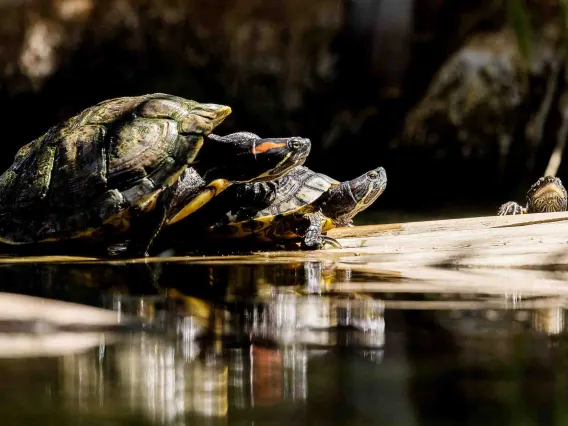University Updates

UArizona professor awarded $800,000 MacArthur Fellowship
Manuel Muñoz, fiction writer and professor of English at the University of Arizona, is one of 20 recipients awarded the $800,000, no-strings-attached MacArthur “genius grant” this year.
Inspired by his upbringing in a family of Chicano farmworkers, Muñoz’s work was recognized for illustrating the complex lives of Mexican Americans living in California’s Central Valley.
The peer-nominated grant spans five years and allows fellows to focus on finding inspiration.
“I want to be guided by my creativity and the muse when it strikes me. The work has to speak to me, not to others, and I love that the fellowship is going to give me that liberty,” Muñoz says.

Inaugural veterinary class makes history
Over 100 students earned their doctor of veterinary medicine degree from the University of Arizona College of Veterinary Medicine on Aug. 24.
Launched in 2020, the state’s first and only public veterinary medicine program stands out due to its unique curriculum. The three-year program allows students to interact with live animals from Day 1, unlike conventional four-year programs, where students don’t get hands-on experience with animals until their third year.
The program is addressing the need for veterinarians locally and nationally and positioning the university as a veterinary education leader. Its success is evident, with over 47% of graduates securing internships and jobs before graduation, showcasing a deep understanding of animal biology, genetics, nutrition and diseases. Graduates specialize in emergency care, equine medicine, small-animal general practice and more.
“I am deeply grateful and excited to celebrate this milestone with the entire community,” said Julie Funk, the college’s dean. “And I cannot wait to see what this inaugural class achieves as they move forward with their careers.”

Turtle Pond gets a renovation
Hidden near a grove of olive trees on the west side of campus is a comfortable spot to sit and observe some of nature’s oldest reptiles — turtles — basking in the sun.
The recently renovated President's Pond is considered a campus treasure both for its charm and its history. Also known as the Turtle Pond, the water feature and surrounding garden were once part of the property of a Queen Anne-style home that served as the university president’s official residence from 1894 until it was razed in 1937 to make way for Gila Hall, just to the east.
Built in 1933, the pond anchors one corner of the Campus Historic District near Second Street and Park Avenue and is a preserved and protected historic and cultural resource. The recent improvements, which include a small brick-lined plaza filled with decomposed granite with space for commemorative benches, were funded by donations to the Campus Arboretum. An anonymous alumni couple who used to meet at the pond between classes are the primary benefactors.

New College of Health Sciences will lift barriers to caring
University of Arizona Health Sciences is addressing critical health care needs in Arizona with the launch of a new College of Health Sciences, approved by the Arizona Board of Regents last June.
The fledgling college will offer five graduate degrees, training future genetic counselors, physician assistants, physical therapists, midwives and clinical translational scientists.
Should they stay in Arizona, the college’s graduates will energize a depleted workforce. One in 5 Maricopa County residents worries about access to health care, and across the state, only 40% of primary care needs are met.
“This new college will augment the educational programs we currently offer through our two accredited medical schools and our colleges of nursing, pharmacy and public health. The health care professionals and research scientists that graduate from the College of Health Sciences will play a vital role in meeting the needs of Arizona residents and alleviating health disparities throughout the state,” says Michael Dake, senior vice president for UArizona Health Sciences.

Pump up the volume on topological acoustics
High-speed cellphones with longer battery life. Heightened awareness of dry soil in forests susceptible to fire. Enhanced detection of diseases in tissue and defects in construction.
Topological acoustics, a developing field of scientific research, could up the volume on improvements that will reverberate across society. And with a $30 million grant from the National Science Foundation, the University of Arizona will be at the leading edge of what Pierre Deymier, professor of materials science and engineering, calls a “quiet revolution.”
The NSF grant will fund the university’s New Frontiers of Sound Science and Technology Center for its first five years. The center also was tabbed for a $30 million funding option for the five years after that.
"Topological acoustics exploits properties of sound waves that have remained hidden,” says Deymier, the center’s director. “It harnesses the full power of acoustic waves.”
The center will include a mentorship program introducing students of diverse backgrounds to the field.
